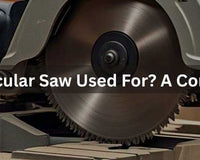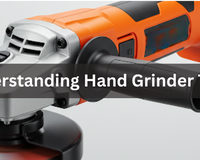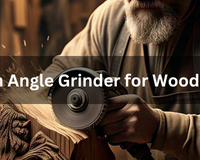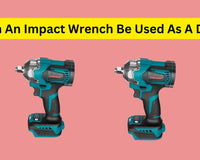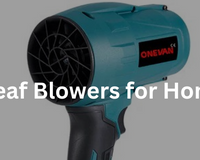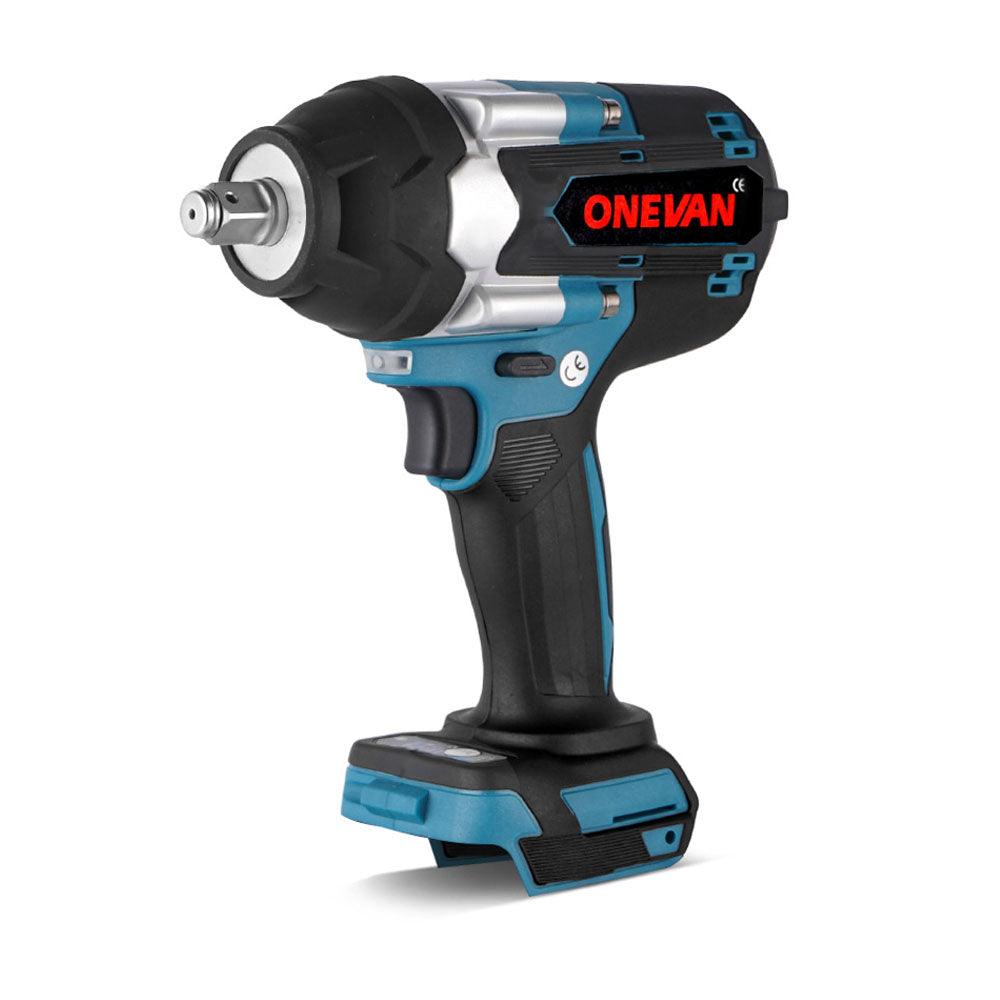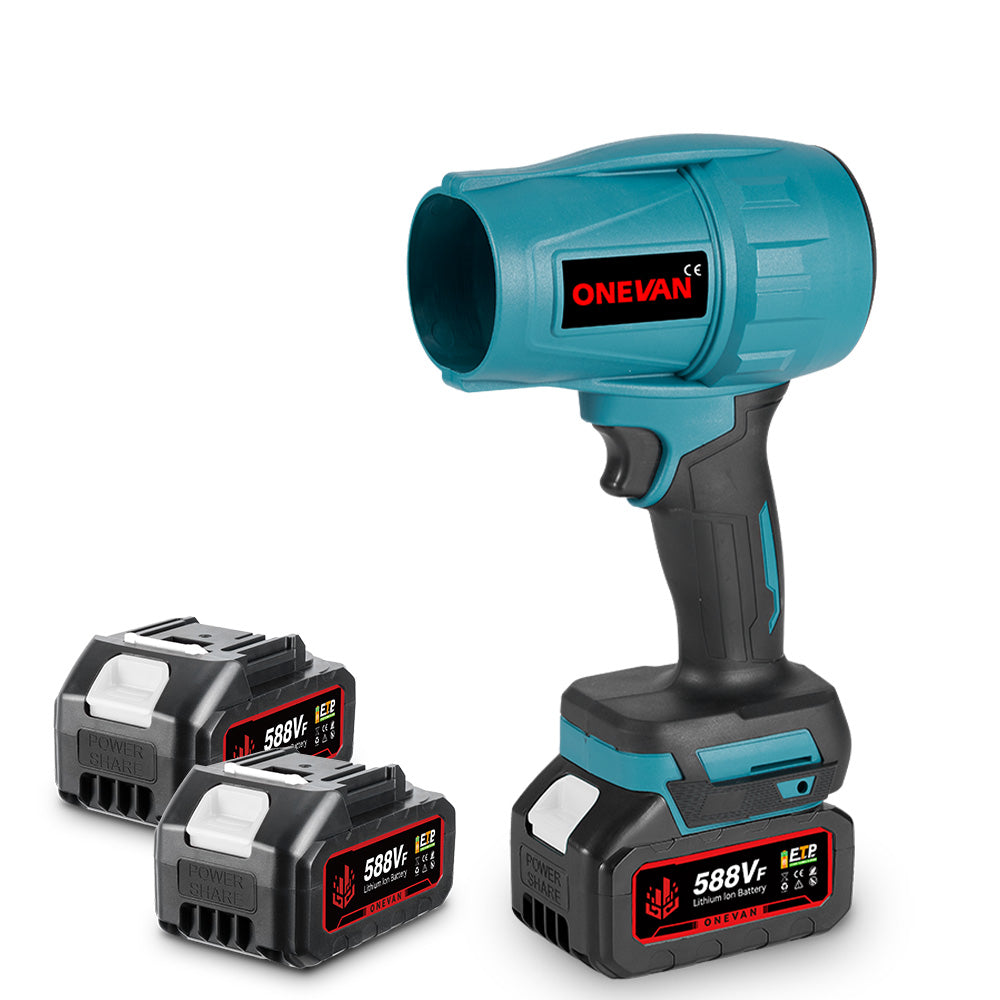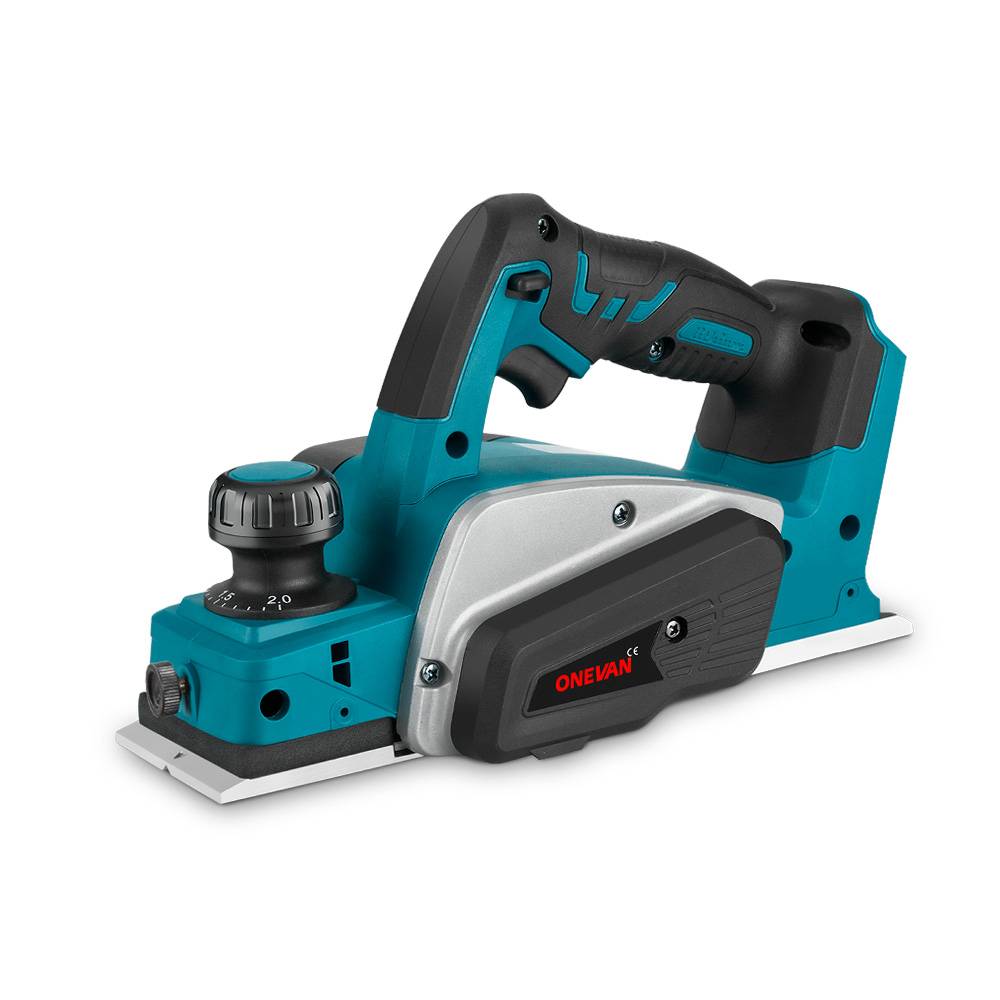For many drivers, one of the biggest challenges is to change a tire with lug nuts.According to Mid Atlantic research report, nearly 40 million drivers encounter flat tires each year in the US alone. Yes, impact wrenches have become the best available solution to open seized lug nuts. You can find several impact wrench sizes available in the market such as 1/4-inch, 3/8-inch, and 1/2-inch. However, choosing the right wrench for beginners can be a difficult task.
So the question is what is the purpose of writing this article? We shall explain to you some of the most basic knowledge of impact wrenches. It will help you in selecting the perfect wrench to keep your toolbox updated. Similarly, we are going to review key factors in choosing the impact wrench drive sizes. Furthermore, what are lug nut torque specifications?
1. What is a Lug Nut?
Before reading the advanced knowledge of impact wrenches, let’s take a quick bird's view of what are lug nuts. Nuts are the tiny metal parts that hold the car’s wheels to the axle. Generally, these nuts are made of chrome-plated steel. These lug nuts are screwed on the threaded wheel studs to a recommended torque specification.
Here are the features of lug nuts:
- Flange: The hexagonal (six-sided) or rounded head
- Seat: The tapered one that makes contact with the wheel.
- Body: The main threaded section.
There are a diverse range of lug nuts in terms of style and sizes but one of the most common types for passenger cars is the hex nut. Selecting the wrong impact wrench size can damage the nut and socket. Therefore, it is crucial to understand the particular lug nut size.
2. Common Lug Nut Sizes and Types of Car
We have read a basic introduction and definition of lug nuts including the importance of choosing the right size. But understanding the lug nut types with the car is extremely important. It will help you in selecting the correct impact wrench drive size.
According to a study held in 2023, by the National Institute of Standards and Technology, lug nut tightening to a given ratio is essential for a safe driving experience.
Incorporating the wrong size lug nut or failing to achieve the right torque specs can lead to wheel detachment. Here is the comparison chart of common lug nut sizes along with their car capability.
Lug Nut Size Chart: Metric vs. Imperial

| Lug Nut Size (Metric) | Lug Nut Size (Imperial) | Typical Car Applications |
| 10mm x 1.25 | Compact Cars, Motorcycles | |
| 12mm x 1.25 | Smaller Cars (Often Japanese Manufacturers) | |
| 12mm x 1.5 | Compact & Midsize Cars, Some Smaller SUVs | |
| 12mm x 1.75 | Some Ford & GM Trucks & SUVs | |
| 14mm x 1.5 | Larger Trucks, SUVs, Full-Size Cars | |
| 14mm x 2.0 | Ford Trucks & SUVs (Heavy-Duty Spplications) | |
| 7/16-inch x 20 | Vintage American Cars | |
| 1/2-inch x 20 | Many American-Made Cars & Some Light Trucks | |
| 9/16-inch x 18 | Larger Trucks (Dodge Ram, Some Older Fords) |
3. How to Determine the Proper Torque Based on Lug Nut Size?
While lug nut size plays a decisive role, it's just one part of the mechanism while selecting the recommended torque of the wheel. Here are the key factors that influence lug nut torque specifications.
1. Thread Size:
Thread size is the diameter and pitch of the threads on the lug nut and wheel stud. As lug nut size increases, thread size also expands. Ultimately, it allows for higher torque values. It is suitable for LHVs.
2. Wheel Material:
Steel wheels typically need lower torque specifications compared to aluminum alloy wheels. Aluminum is more vulnerable to thread damage if over-torqued.
3. Vehicle Weight and Design:
LHVs naturally exert greater force on the wheels, requiring higher torque values to maintain an adequate clamping force. Subsequently, vehicle design factors like suspension type and road type can also impact the recommended torque specifications.
4. Bolt Tension Requirements:
The ultimate goal is to achieve a specific level of tension (measured in pounds-force) in the lug bolts. This tension ensures the wheels are securely attached to the hub. Similarly, they maintain some flexibility to absorb road shock. Torque specifications are set to obtain this desired bolt tension.
5. Thread Pitch:
The thread pitch is the distance between threads. A standard thread pitch (more threads per inch) expands the clamping force over a larger area. It also allows slightly lower torque settings compared to a coarser thread pitch.
6. Lubrication on Threads:
Lubrication can slightly reduce the friction between the nut and threads. Ultimately, it paves the way to a lower torque value required to obtain the desired bolt tension. However, several manufacturers do not recommend lubricating lug nut threads. Because they can change the required for tightening. It is highly recommended to read your vehicle's owner's manual for lubrication requirements.
7. Type of Seat:
The shape of the seat (conical, ball/radius, flat/mag) can affect torque specs. The major reason is the contact area between the nut and the wheel.
- Conical Seat: It is the most common type. The vertical seat delivers a wedging effect that enhances clamping force.
- Ball/Radius Seat: This rounded seat enables self-centering to a limited extent and allows for slight misalignment during tightening.
- Flat/Mag Seat: The Mag seat provides the least amount of self-centering. Subsequently, it requires the most precise alignment during tightening.
Actual usage of torque varies depending on the following reasons:
- The specific guidance and recommendations of the vehicle manufacturer
- The tool's actual performance,
- And the work environment.
Users should also consider the specific application situation and follow the manufacturer's torque recommendations when selecting and using tools.
4. The Size of Impact Wrench Use for Lug Nuts

When you are facing annoying lug nuts during a tire change, an impact wrench can help you effectively. But with various impact wrench sizes available:
- 3/8-inch
- 1/2-inch
- 3/4-inch
- and 1-inch drives)
Selecting the right one can be significantly challenging. Especially the newcomers who are black about it.
Understanding Impact Wrench Drive Sizes:
The most crucial factor in selecting an impact wrench for lug nuts is the drive size. We are talking about a square-shaped socket connection at the end of the wrench. We have discussed some common drive sizes and their capabilities:
3/8-inch Drive:
This compact size is ideal for beginner DIYers. Furthermore, it is also good for intermediate technicians working on smaller vehicles like motorcycles or scooters. Good maneuverability in tight spaces makes it distinctive. However, it has a lower torque output, making it unsuitable for larger lug nuts.
1/2-inch Drive:
A 1/2-inch Drive is the most demanding tool for both beginners and professional technicians. This drive wrench offers a good combination of maneuverability and power. In addition, it can also effectively work for most passenger cars and light truck lug nuts. Hence 1/2-inch Drive delivers a fine torque to break free even rusted nuts.
3/4-inch Drive:
¾ inch drive is made for heavy-duty applications. It's ideal for people working on larger vehicles like trucks, SUVs, or vans with lug nuts requiring optimum torque to loosen.
1-inch Drive:
I-inch drive comes on the top of the list in heavy impact wrenches, reserved for the most demanding industrial objects. For instance large farm equipment or heavy-duty trucks with oversized lug nuts. It is not suitable for car owners.
Matching Impact Wrench Size to Lug Nut Torque:
In addition to drive size, torque output is also paramount. Generally, it is measured in foot-pounds (ft-lbs) and indicates the amount of twisting force the wrench can deliver.
General Impact Wrench Size to Lug Nut Torque Guide
| Impact Wrench Drive Size | Typical Torque Output Range (ft-lbs) | Suitable Lug Nut Torque Range (ft-lbs) | Typical Vehicle Applications |
| 3/8-inch | 50 - 150 | Up to 75 | Motorcycles, Scooters, Small ATVs |
| 1/2-inch | 250 - 400 | 75 - 250 | Most Passenger Cars, Light Trucks |
| 3/4-inch | 450 - 700 | 200 - 400 | Larger Trucks, SUVs, Vans |
| 1-inch | 800+ | 400+ | Heavy-Duty Trucks, Industrial Applications |
5. Torque Output of Different Wrench Sizes
If you have basic knowledge about impact wrench torque output then you can effortlessly deal with tough lug nuts. It means how much twisting force an impact wrench can deliver to execute any task (measured in foot-pounds, ft-lbs). Hence, selecting a suitable spanner will ensure enough power to loosen nuts.
| Impact Wrench Drive Size | Typical Torque Output Range (ft-lbs) | Suitable Lug Nut Size & Type (Examples) |
| 3/8-inch | 50 - 150 | * Small Metric (10mm x 1.25) on Motorcycles, Scooters * Smaller Imperial (7/16" x 20) on Vintage Cars |
| 1/2-inch | 250 - 400 | * Most Metric Sizes (12mm x 1.25, 12mm x 1.5, 14mm x 1.5) on Compact & Midsize Cars, Light Trucks * Smaller Imperial Sizes (1/2" x 20) on American-Made Cars |
| 3/4-inch | 450 - 700 | * Larger Metric Sizes (14mm x 1.75, 14mm x 2.0) on Larger Trucks, SUVs * Larger Imperial Sizes (9/16" x 18) on Heavy-Duty Trucks |
| 1-inch | 800+ | * Heavy-Duty Lug Nuts on Large Trucks, Industrial Equipment |
Choosing the correct size wrench based on torque output guarantees safety and efficiency.
Here is the classification of torque output for different wrench sizes:
- 3/8-inch Drive (Low Torque):
- 1/2-inch Drive (Mid-Range Torque):
- 3/4-inch & 1-inch Drive (High Torque):
6. What Wrench Impact Size Do You Need for Your Car?

The right impact wrench size significantly reduces tire change hassle. Therefore, we are going to cover the pros and cons of each impact wrench size.
Compact Cars & Motorcycles (3/8-inch Drive):
- Pros:
- Lightweight & Portable:
- Maneuverability in Tight Spaces:
- Cons:
- Limited Torque:
Sedans & Mid-Size Cars (1/2-inch Drive):
- Pros:
- Versatile & Powerful:
- Manages Most Passenger Car Lug Nuts:
- Cons:
- Can Be Bulky:
SUVs & Light Trucks (1/2-inch Drive):
- Pros:
- Good Balance of Power & Size:
- Cons:
- May Not Be Ideal for Very High-Torque Applications:
Heavy-Duty Trucks & Commercial Vehicles (3/4-inch or 1-inch Drive):
- Pros:
- Delivers High Torque:
- Cons:
- Heavy & Expensive:
Performance Cars (1/2-inch Drive - Use with Caution):
- Pros:
- Manages Most Lug Nuts with Precise Control:
- Cons:
- Requires Attention to Avoid Overtightening or Hub Damage:
7. Why 1/2-Inch Wrenches Are the Standard for Lug Nuts?
The 1/2-inch impact wrench is the industry standard for removing rusty lug nuts. But why do so many DIYers and professionals prefer this size? Now, let’s discuss why the 1/2-inch wrench is a jack-of-all-trades when it comes to lug nut tough operations.
Power with Maneuverability
From compact cars to light trucks, it has enough force to change lug nuts. Therefore, ½-inch wrenches can be used for all users. It also provides ergonomic comfort because of its size. This means that the tool fits into most hands comfortably and has equal weight balance which helps reduce fatigue during those important tyre changes.
Compatibility
1/2-Inch is just right for most lugs on different types of vehicles. In this scenario, you have the correct tool for the task thus preventing any damage to the nuts.
Diverse Range of Socket Sizes
The 1/2-inch drive system has a diverse range of socket sizes available. It means you can effortlessly find the perfect socket size for any lug nut.
Torque Range
According to manufacturer specifications, 1/2-inch impact wrenches have a torque output that falls right within the recommended range for tightening lug nuts. They are quite capable of fixing over-tightened or rusted lug nuts. For proper and safe tire replacement, this combination of power and control is essential.
Durability
1/2-inch impact wrenches are generally built on a strong mechanism. For instance, they can efficiently perform rigorous tasks in the automotive industry. This feature makes ½-inch impact wrenches a suitable demand.
8. Recommended Torque Settings for 1/2-Inch Wrenches
Although a 1/2-inch impact wrench is a versatile tool, it's paramount to incorporate the proper torque settings. It is mandatory for the safe and secure wheel attachment. Here are the recommended torque ranges for different vehicle types:
- Compact Cars | 80 - 100
- Mid-Size Cars | 90 - 120
- Full-Size Cars | 100 - 120
- SUVs & Light Trucks | 100 - 150
- Heavy-Duty Trucks | 150 - 250+
Why Torque Settings Matter?
- Safety:
- Under-Tightening: If the lug nuts aren't securely tight, the wheel can loosen during the drive.
- Over-Tightening: Overtightening can damage the threads on the lug nuts.
- Security: Appropriate torque value ensures the safety of the wheel and vehicle. Follow the manufacturer's torque recommendations.
9. What Happens if Using an Incorrectly Sized Wrench?
There can be severe consequences of using an incorrectly sized impact wrench. For instance, your safety and car performance will be at risk.
Damaged Lug Nuts:
- Undersized Wrench:
- Oversized Wrench:
Damaged Impact Wrench:
- Undersized Wrench:
- Oversized Wrench:
Increased Risk of Car Accidents:
Loose lug nuts pose a serious safety hazard.
Impaired Vehicle Performance:
Loose or damaged wheels can severely impact your car's stability.
Hub Damage:
Over-tightening lug nuts on cars with delicate alloy wheels is a significant issue. Using an oversized wrench can easily damage the hub.
10. Main Factors to Consider When Choosing The Right Size Impact Wrench For Lug Nuts
We have already mentioned that there are different varieties of impact wrenches, and choosing the perfect tool can be overwhelming. Below, we are going to mention the key factors to consider when selecting the ideal impact wrench:
Nut Size:
- Ensure the wrench's drive size (e.g., 1/2-inch) aligns with the socket size.
Torque Requirement:
- Every car has a particular torque specification for lug nuts. Always select a wrench with a torque output that meets this value.
Vehicle Type:
- Larger and heavier vehicles (SUVs, trucks) often require higher torque for lug nuts compared to smaller cars.
Frequency of Use:
- For occasional tire changes, a lighter and more portable 3/8-inch wrench might be sufficient.
Battery Life:
- For smaller tasks, a smaller battery is sufficient. For longer sessions, consider a larger battery.
Tool Weight and Balance:
- A well-balanced wrench with a comfortable grip increases the comfort level. This is especially crucial for frequent jobs.
Safety Features:
- Always give priority to features like pressure relief valves and LED lights for better visibility.
Price and Budget:
- Impact wrenches range in price depending on size, features, and brand. Think twice about your budget and focus on the features that are crucial to completing your job.
11. Safety Tips For Using Impact Wrenches on Lug Nuts
| Safety Tip | Description |
| Wear Protective Gear | Always wear safety glasses and ear protection |
| Check the Tool Before Use | Check the impact wrench for any damage, leaks (for air wrenches), or loose parts. |
| Use the Correct Socket Size | A loose-fitting socket can damage the lug nut, causing injury. |
| Start with Lower Torque | Set the torque to a lower value within the recommended range and gradually increase. |
| Keep Your Work Area Clean and Organized | Clear the area around the vehicle and organize your tools for smooth access. |
| Do Not Overreach | Avoid putting excessive strain on your back for tools in uncomfortable positions. |
| Follow the Manufacturer's Guidelines | Refer to the impact wrench's user manual for proper operation instructions. |
| Regularly Check the Torque | Use a torque wrench for a final verification of proper tightness. |
| Keep Bystanders at a Safe Distance | Maintain a safe distance between yourself and others while operating the impact wrench. |
12. Conclusion
We have explained both basic and advanced knowledge of the size of impact wrench for lug nuts. To make your job convenient, ONEVAN is offering brushless impact electric wrenches with tons of useful features. Such as;
- Enhanced Efficiency:
- Reduced User Effort:
- Power and Speed:
- Popular Sizes( both 1/2-inch and 3/4-inch wrenches)
- Silent but impactful working
13. FAQ
1. What size impact socket do I need for lug nuts?
A 1/2-inch drive impact socket can be used for lug nuts. However, if you are not familiar with the technical knowledge, it's recommended to consult your car's owner's manual. There, you can find these readings are easily available. It won’t damage your car also.
2. What kind of impact Wrench do I need to remove the lug nuts?
For lug nuts, you can use both 1/2-inch and 3/4-inch brushless impact wrenches. ONEVAN has an extensive range of impact wrenches in the following sizes:
- 1/2-inch 1200N⋅m Brushless Electric Impact Wrench
- 3/4-inch 3100N⋅m Brushless Electric Wrench.
3. Will a 1/4-inch impact remove lug nuts?
No, a 1/4-inch impact wrench is not a suitable option for lug nuts. These wrenches are built to perform small tasks. They are low in torque required to loosen the tight grip of lug nuts. Incorporating low powered wrench could potentially damage the lug nuts. For lug nuts, a 1/2-inch or even 3/4-inch impact wrench is a better choice.
4. Is it OK to use an impact wrench on lug nuts?
In most cases, an impact wrench is ideal for tightening and removing wheel nuts, but it's worth noting that the final tightening should be done with a torque wrench to ensure that the specified torque is not exceeded.
5. How many ft-lbs of torque to remove lug nuts?
The recommended torque value varies for each car. Again, without checking the exact requirements of your vehicle, general reading is not recommended. You can find in the car manual where the reading will be in ft-lb (foot-pounds).
6. Is 250 ft-lbs enough to remove lug nuts?
There are very few chances that 250 ft-lbs delivers enough torque to loosen lug nuts. Most car lug nuts require higher torque values. Similarly, the standard range is 80 ft-lbs to 150 ft-lbs.
7. How much torque does an impact driver need to remove lug nuts?
An impact driver is not made to loosen the lug nuts. On the other hand, to perform this job, you must use impact wrenches because they provide short bursts in minimum time. This feature makes them an ideal power tool for lug nuts.
8. Can you over-torque lug nuts by hand?
Yes, the possibility is there but it is not a standard practice. An impact wrench can execute this job effectively. For instance, if you use an impact wrench and set the right torque value, it will do a perfect job.
9. How tight are you supposed to tighten lug nuts?
Lug nut tightness value is measured in foot pounds (ft-lbs). The specific recommended torque value depends on your vehicle. Reading the car's owner's manual is a good option to avoid any risk.
10. How do I know if my lug nuts are tight enough?
There's no definitive way to check if the lug nuts are tight enough. However, using tools like torque wrenches can do this job easily. Like, you can read the specs from the user manual and set the torque on a given reading.


